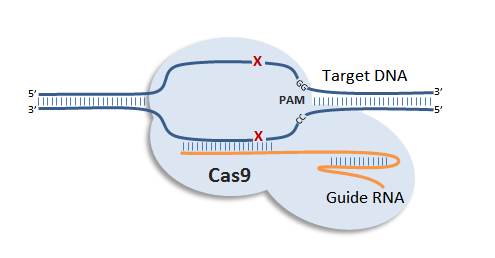Genomic Editing Therapies Under Development
This article is more than 2 years old
 I love that I live in a hotbed of technology. Boston’s crammed with hospitals, robotics companies, 3-D printing companies, and a thriving bio-tech industry. I’m frequently inspired by what the science and tech folks around here are up to, and I hope that I glean some of that magic by osmosis. Sometimes, though, I read about a plan or device that gives me pause and makes me think I may not want to be so nearby. Editas Medicine’s recent press release detailing their plans to embark on a new phase of genome-editing treatments is one such announcement.
I love that I live in a hotbed of technology. Boston’s crammed with hospitals, robotics companies, 3-D printing companies, and a thriving bio-tech industry. I’m frequently inspired by what the science and tech folks around here are up to, and I hope that I glean some of that magic by osmosis. Sometimes, though, I read about a plan or device that gives me pause and makes me think I may not want to be so nearby. Editas Medicine’s recent press release detailing their plans to embark on a new phase of genome-editing treatments is one such announcement.
Editas is a Cambridge-based biotech firm that is attempting to design new genetic treatments for diseases. While that’s a goal I certainly support, my reservations stem from how they intend to do this. Gene therapy has been around for a little while, but Editas wants to revolutionize it — they believe they’ve come up with a new method for editing genomes that involves changing the genome’s DNA sequence. According to Editas, the new genome-editing system will allow them to treat diseases for which we have no current treatments.

Research conducted over the past two years has granted scientists important insights into microbes — namely, they have an immune system comprised of proteins and RNAs that fends off viruses. Researchers have used that system to edit base genomic pairs and longer strands of DNA. Scientists can use RNAs to help bring these bacterial immune systems, also known as CRISPR/Cas, to a genetic sequence that contains a mutation that will cause a disease. They basically chop out the compromised section of DNA and replace it with the Cas system that includes the sequence that has the virus-fighting system in it. In other words, if you think of DNA strands as film, the scientists “edit” a movie (our genomic structure) by cutting the bad scenes and splicing in good ones to take their place.
It sounds deceptively simple, doesn’t it, the idea of cutting out bad spots and replacing them with new good one? But even though I’m no scientist or genomic expert, I struggle to accept that bringing such a concept to fruition is that easy. I’m not sure how I feel about “editing” our DNA. We’re not movies or books — a movie can do without a fuzzily shot scene, just as a book can do without an extraneous paragraph or page. But even if it’s got a mutation, is that sequence superfluous? Can it just be replaced? I’m thinking even of organ transplants — okay, so here’s a nice healthy liver or heart to replace the bad one. Doctors can’t just pop them in there — there’s immune system rejection worries and other bodily adjustments that may or may not play out the way we want. Do we know for certain that something like that wouldn’t happen with DNA?
Thankfully, Editas realizes that it has a ways to go before parlaying this new treatment into a deliverable medicine. It needs to make sure that the guide RNA doesn’t lead to the misidentification of the diseased DNA sequences. It also needs to figure out how exactly to deliver Cas sequence into the cells of patients. Still, Editas says that if the corrected gene is spliced into sequence, it will retain its chromosome location, which means that the cells can still switch the gene on and off, which allows it to continue its natural responses.
Editas was started on a wave of momentum generated by breakthroughs in gene therapy. Interestingly, Editas co-founder George Church, a geneticist who works for Harvard, is the same guy who made waves for suggesting that we clone Neanderthals and eventually integrate them back into society. Church has also been a major player in the Human Genome Project, so he clearly knows about genetics, but he also seems to enjoy surprising the scientific community with wacky proposals that make me wonder just a little bit whether he’s a bit of a renegade. If only Walter Bishop were real — they’d make a great team (especially with a little psychedelic help!)











